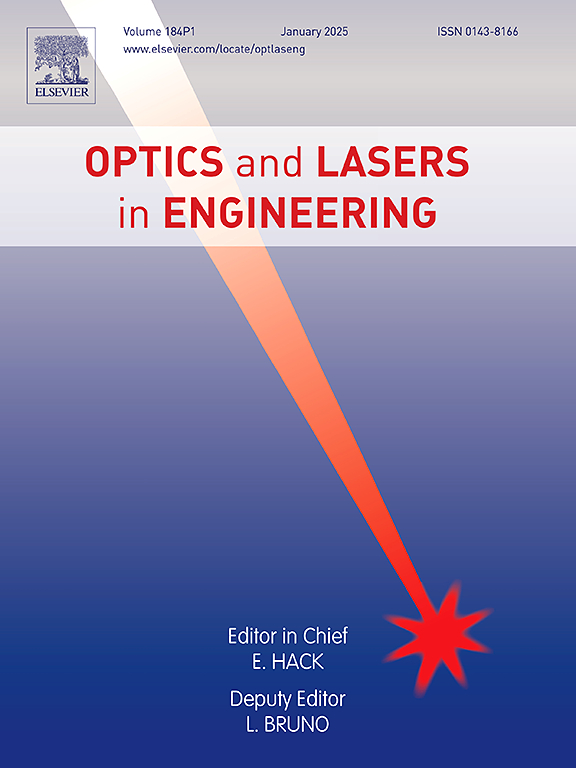使用角度对准透镜阵列和自适应眼动跟踪模块进行光束控制的光场显示器中观看区域的动态扩展
IF 3.5
2区 工程技术
Q2 OPTICS
引用次数: 0
摘要
我们提出了一种先进的光场显示系统,该系统通过集成角对准透镜阵列(AALA)、紧凑的电动力微光束偏转器(μBD)和基于深度学习的自适应眼动追踪(AET)模块来动态扩展有效观看区域。通过根据观察者的位置将光线转向选择性激活的AALA部分,该系统显着拓宽了水平视场(FoV),同时保持了高三维(3D)图像保真度。为了实现这一功能,我们定制了一个小型化的μBD用于实时光束控制,AET模块针对快速准确的横向眼动追踪进行了优化。当观察者横向移动时,系统自适应地将适当的预生成元素图像阵列(EIA)引导到相应的AALA段,从而在扩展视场内实现连续无缝的3D可视化。该系统的观看区域经过精心设计,以防止相邻区域的重建图像之间的重叠。特别地,在动态切换视点状态下,该系统的设计使得来自μBD光束导向效率限制的非衍射射线噪声在观察者在侧视区的瞳孔位置切换中得到充分抑制。实验结果表明,该结构为克服传统光场显示固有的视场限制提供了一种可扩展的有效解决方案。本文章由计算机程序翻译,如有差异,请以英文原文为准。
Dynamic expansion of viewing zones in light field displays using an angular-aligned lens array and adaptive eye-tracking module for beam steering
We propose an advanced light field display system that dynamically expands the effective viewing zone by integrating an angular-aligned lens array (AALA), a compact electro-dynamic micro beam deflector (μBD), and a deep learning-based adaptive eye-tracking (AET) module. By steering light toward selectively activated segments of the AALA based on the observer’s position, the system significantly broadens the horizontal field-of-view (FoV) while maintaining high three-dimensional (3D) image fidelity. To achieve this functionality, a miniaturized μBD is custom-designed for real-time beam steering, and the AET module is optimized for fast and accurate lateral eye-tracking. As the observer moves laterally, the system adaptively directs the appropriate pre-generated elemental image array (EIA) to the corresponding AALA segment, enabling continuous and seamless 3D visualization across the extended FoV. The viewing zones of the proposed system are carefully designed to prevent overlapping between reconstructed images in adjacent zones. In particular, in the dynamically switched viewpoint state, the proposed system is designed such that non-diffracted ray noise, originating from the beam steering efficiency limits of the μBD, is sufficiently suppressed from the observer’s switched pupil position in the side viewing zones. Experimental results demonstrate that this architecture provides a scalable and effective solution for overcoming the inherent FoV limitations of conventional light field displays.
求助全文
通过发布文献求助,成功后即可免费获取论文全文。
去求助
来源期刊

Optics and Lasers in Engineering
工程技术-光学
CiteScore
8.90
自引率
8.70%
发文量
384
审稿时长
42 days
期刊介绍:
Optics and Lasers in Engineering aims at providing an international forum for the interchange of information on the development of optical techniques and laser technology in engineering. Emphasis is placed on contributions targeted at the practical use of methods and devices, the development and enhancement of solutions and new theoretical concepts for experimental methods.
Optics and Lasers in Engineering reflects the main areas in which optical methods are being used and developed for an engineering environment. Manuscripts should offer clear evidence of novelty and significance. Papers focusing on parameter optimization or computational issues are not suitable. Similarly, papers focussed on an application rather than the optical method fall outside the journal''s scope. The scope of the journal is defined to include the following:
-Optical Metrology-
Optical Methods for 3D visualization and virtual engineering-
Optical Techniques for Microsystems-
Imaging, Microscopy and Adaptive Optics-
Computational Imaging-
Laser methods in manufacturing-
Integrated optical and photonic sensors-
Optics and Photonics in Life Science-
Hyperspectral and spectroscopic methods-
Infrared and Terahertz techniques
 求助内容:
求助内容: 应助结果提醒方式:
应助结果提醒方式:


